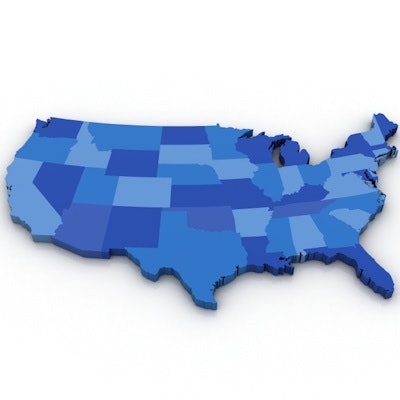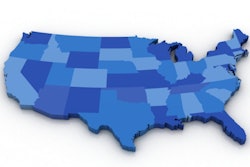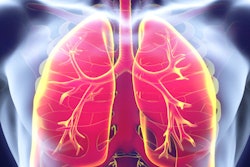
U.S. regions with the greatest proportion of smokers eligible for CT lung cancer screening often provide the least access to the exam -- underscoring the maldistribution of CT screening centers in the country, according to an article published in the April issue of the Journal of the American College of Radiology.
Analyzing data from the 2015 National Health Interview Survey, senior author Jan Eberth, PhD, and colleagues from the University of South Carolina investigated potential discrepancies in the availability of CT lung screening centers in different regions of the U.S. (JACR, April 2019, Vol.16:4, pp. 590-595).
Previous studies have confirmed that rural regions have considerably higher smoking rates as well as lung cancer incidence and mortality rates compared with urban areas. Regardless of the greater need for early cancer detection in these regions, most CT lung screening programs are located in metropolitan areas. In 2014, for example, only one out of 203 established lung screening programs in the U.S. was situated in a nonmetropolitan area.
Despite this disparity in access, Eberth and colleagues discovered that CT lung screening participation rates were roughly the same in rural regions (3.7%) as they were in urban areas (3.8%). They also found that rural residents, who only formed 15% of the U.S. population, accounted for a disproportionately large part of the screening-eligible cohort at 23% -- emphasizing their need for increased access to screening programs. The researchers based CT lung screening eligibility on the 2013 U.S. Preventive Services Task Force (USPSTF) guidelines.
The discrepancy in CT lung screening access was even more pronounced geographically: The vast majority (40.3%) of screening-eligible individuals lived in the South, yet southern states had half the number of CT lung screening centers per capita that northeastern states had, where only 15.7% of screening-eligible smokers resided.
| U.S. regional variation in CT lung cancer screening | ||||
| Northeast | West | Midwest | South | |
| Proportion of all individuals eligible for lung screening | 15.7% | 17.9% | 26.2% | 40.3% |
| Number of CT lung screening centers per 100,000 eligible persons | 5.32 | 3.44 | 2.35 | 2.26 |
| CT lung screening uptake | 10.1% | 1.6% | 2.2% | 3.5% |
These disparities in CT lung screening may show in action the "inverse care law," which suggests that the relative availability of screening is inverse to the needs of the population served, according to the authors.
"The preponderance of evidence suggests that the populations in need of access to [CT lung] screening (i.e., rural and southern populations) have the least access," they wrote.
Although screening access has indeed grown over the past several years -- with the number of programs exceeding 1,700 in 2017 -- recent reports indicate that overall screening uptake has not followed suit just yet, with most screening centers still clustered in the Northeast, they added.
The group proposed several measures that could help improve CT lung screening for eligible smokers living in nonmetropolitan areas, including developing and refining decision aids that are reading-level appropriate, creating new (bundled) payment models, and offering higher reimbursement rates for clinicians. They also stressed the need for more analyses of population-based surveys in order to identify predictors of screening uptake and improve screening access for rural populations.




















